The name is perhaps the least convincing thing about this smartphone.
OnePlus Open.
Open because… “open”, it opens.
It is OnePlus’ first foldable but it is an incredibly mature product, which however did not particularly surprise us. After all, he is the son of a marriage with Oppo, a company that already has considerable experience in this sector.
The result is a product that is well made, well finished and well designed.
It’s not perfect, we’ll tell you this, but it tries to have its say, and it does so with some success.
The displays are the real highlight
OnePlus Open it is a foldable, i.e. a smartphone that when closed is like a traditional telephone, when opened it doubles the available space becoming more similar to a tablet. Following the path traced by the competition, we therefore find ourselves due display: one inside, larger, and one outside, smaller in size.
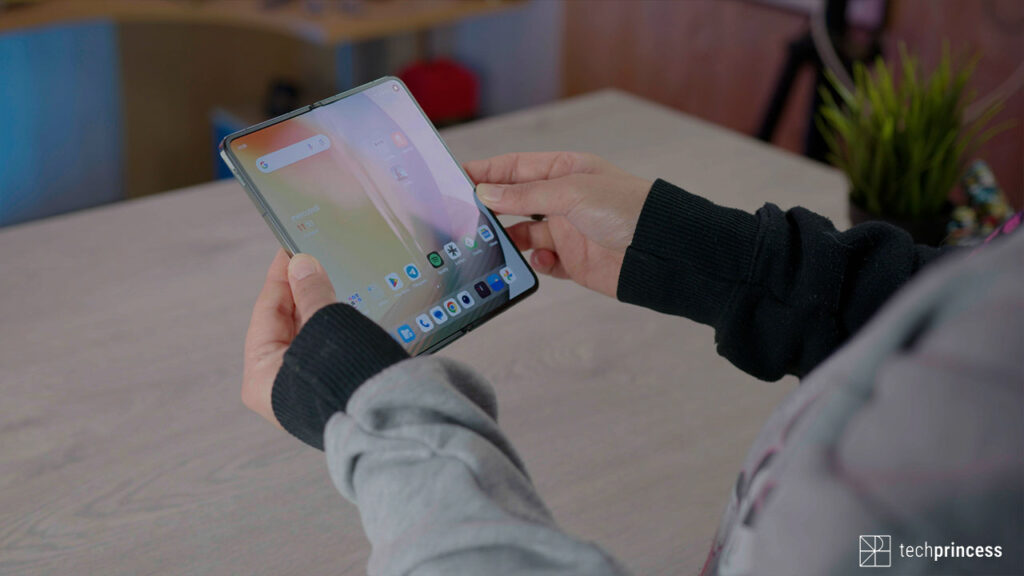
Let’s start with the internal one.
Indeed, let’s start from one of the features that most interest the end user when talking about this specific category of products: the fold.
The fact that the panel flexes means that a slight groove remains in the middle, normally visible to the naked eye and perceptible to the touch.
The OnePlus foldable is no exception but here the crease can be felt and seen very little. You have to tilt it the right way and in the right light to see it. Not to mention that, at the crease, the touchscreen still works perfectly, which is less obvious than you might imagine.
The internal display and software optimization
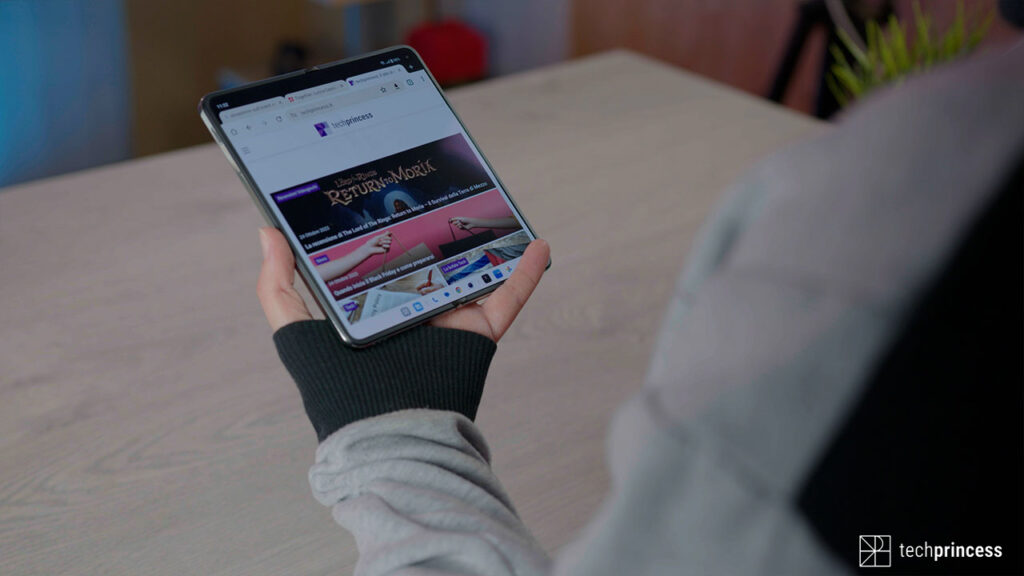
However, the Chinese company also surprised us with the type and quality of the displays offered.
We have it inside an AMOLED LTPO 3.0, which switches from 1 to 120 Hz dynamically, based on the content displayed. This gives you a smoother use experience and a less “traumatizing” experience for the battery. Yes, because at lower refresh rates consumption is reduced, helping you get through the day.
So much space available on these 7.82 inches, accompanied by a peak brightness that reaches 2,800 nits. A truly very high value that guarantees excellent visibility and excellent performance in any situation.
In everyday life using it is a real pleasure, anywhere and for anything: playing, watching videos, reading, using social media. It works well and you have the best viewing experience possible.
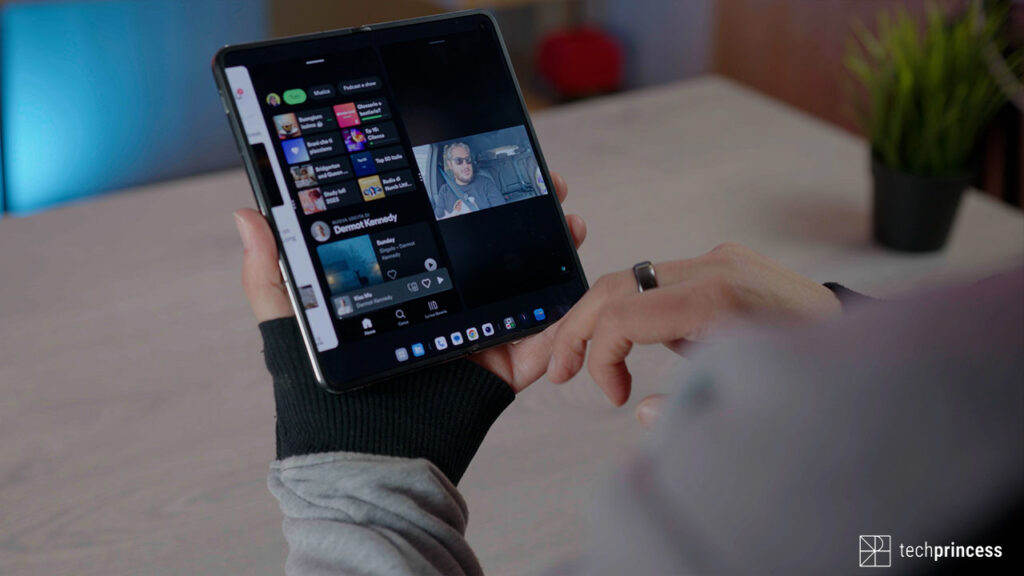
Obviously the software also matters because a foldable – be it OnePlus Open or any other – is often purchased for productivity, to meet the advanced needs of an advanced user.
OnePlus did something very clever here.
You can use a single window, you can place two side by side – and so far it’s not surprising – or we can have them, vertical.
We therefore do not have two apps that are more sacrificed than the other, reduced to a square, but three identical windows, two of which are totally visible, the other instead remains in the margin but by touching it you scroll the screen to view it in its entirety.

You can also reverse the order or view all three with a small gesture, a zoom out that reduces their size.
Alternatively you can have them one fullscreen and two ready to use abovealso in this case in the margin but easily recalled with a tap.
There is also the application bar that allows you to drag apps on the fly to place them side by side but also to open recent documents and photos.
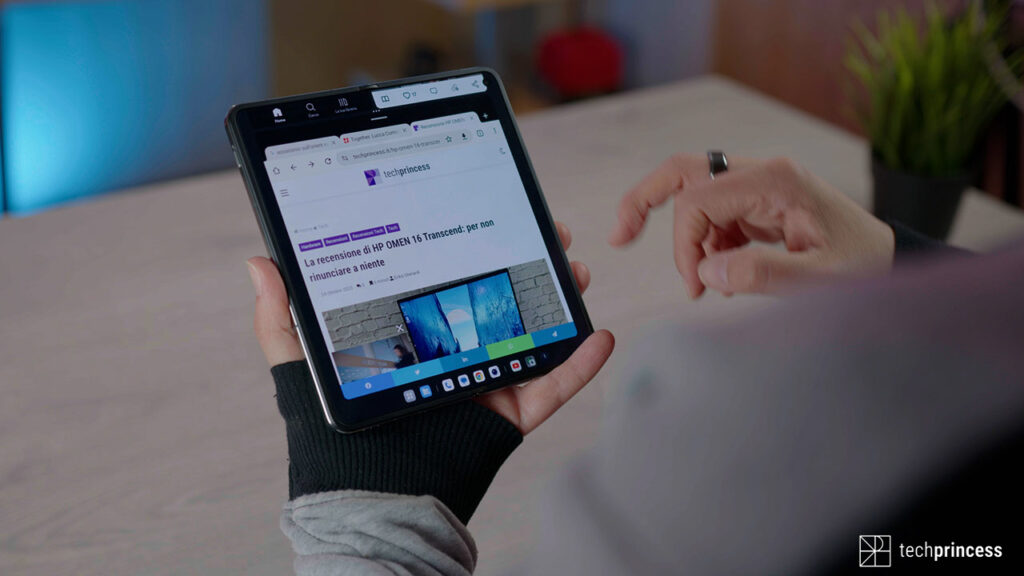
There is perhaps only one thing from a software point of view that didn’t excite us: we cannot change the homepage grid.
In fact, normally we keep 5 icons per page horizontally, here we are limited to 4. Obviously it’s not a drama but we would have preferred to be able to do it.
Finally, there is another aspect that could excite or displease you, depending on your habits: the homepage of the internal screen is replicated on the external one, so if you change on one side, you also change on the other. We didn’t mind at all, also because it helps us find everything very quickly both when closed and open.
The external display and overall aesthetics
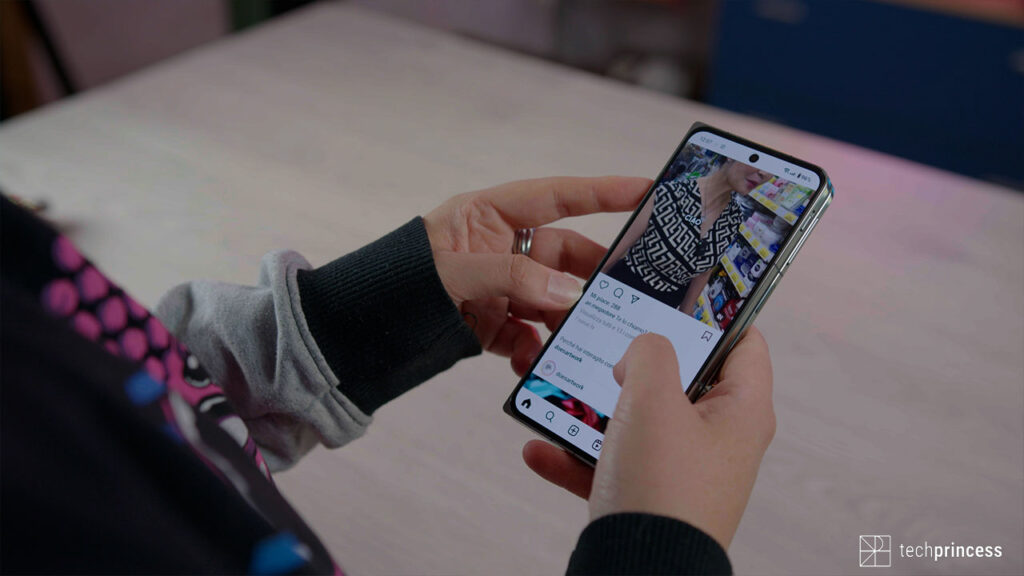
The OnePlus Open’s external display is always an AMOLED, always LTPO 3.0, always at 120 Hz, always with a peak brightness of 2,800 nits. However, what is most striking is the aspect ratio: the dimensions are in fact the right ones, for everything. This means that you can use it closed for any activity, without sacrifices and without effort.
Right, the thickness still remains challenging. Both in general and in the upper part, which houses a particularly bulky camera module. On the other hand the rear rim stud is convenient for resting your finger on and holding the smartphone bettereven when it’s open.
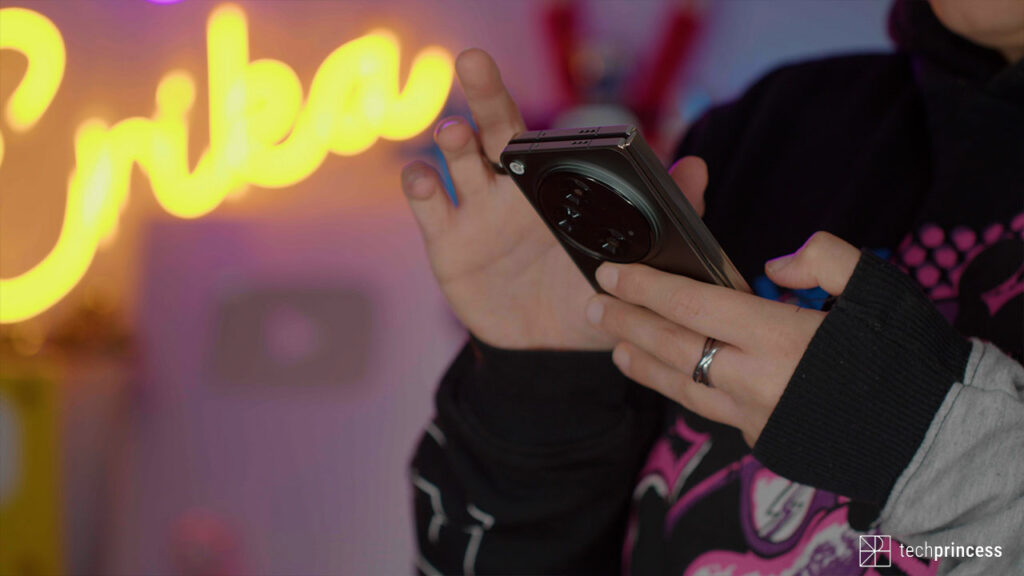
Otherwise the design isn’t too surprising.
We appreciated the flat edges, which allow it to stand on its own, the ringtone slider, which is always a OnePlus trademark, and the hinge, which allows you to angle it quite well. Of course, around 120 degrees the weight of the camera pulls it downwards but it still offers good versatility.
Obviously we cannot comment on the durability of the weather because it was with us for a week and it is too early to say too much.
OnePlus Open review: and everything else?
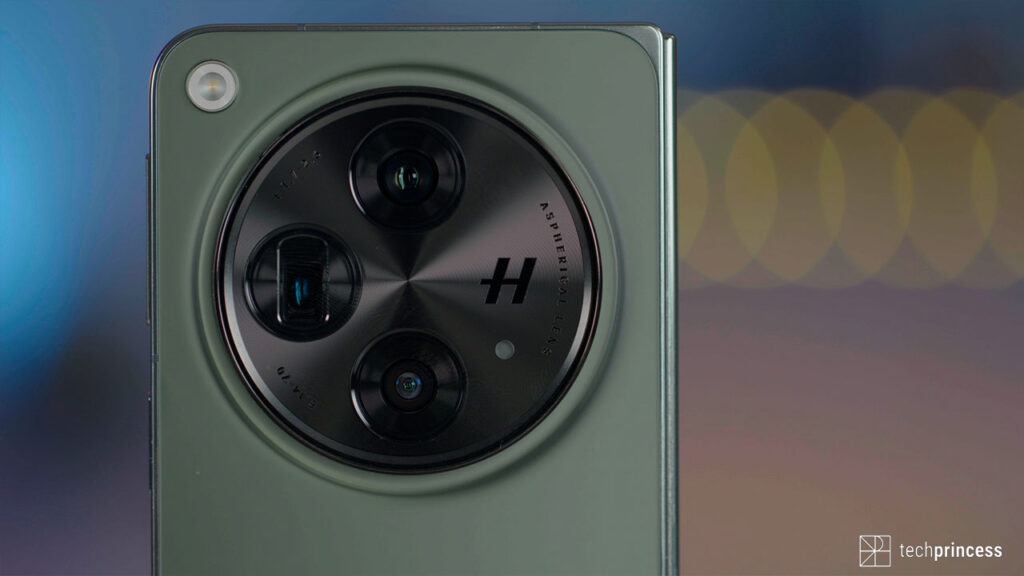
The camera module, as anticipated, is truly impressive but the space occupied is justified by what it contains:
- 48 megapixel main camera with optical stabilization;
- 64 megapixel telephoto lens with 3x optical zoom;
- 48 megapixel ultra-wide angle.
There’s everything, too the collaboration with Hasselblad.
The shots are very good, although we had the impression that the software intervenes a little too much on some occasions and that the focus is sometimes a little imprecise. It always seems that the focus is always a little further ahead or a little further behind than we would like.
Overall, however, it gives us interesting and above-average shots even if it is difficult to choose a leaflet for its photographic sector.

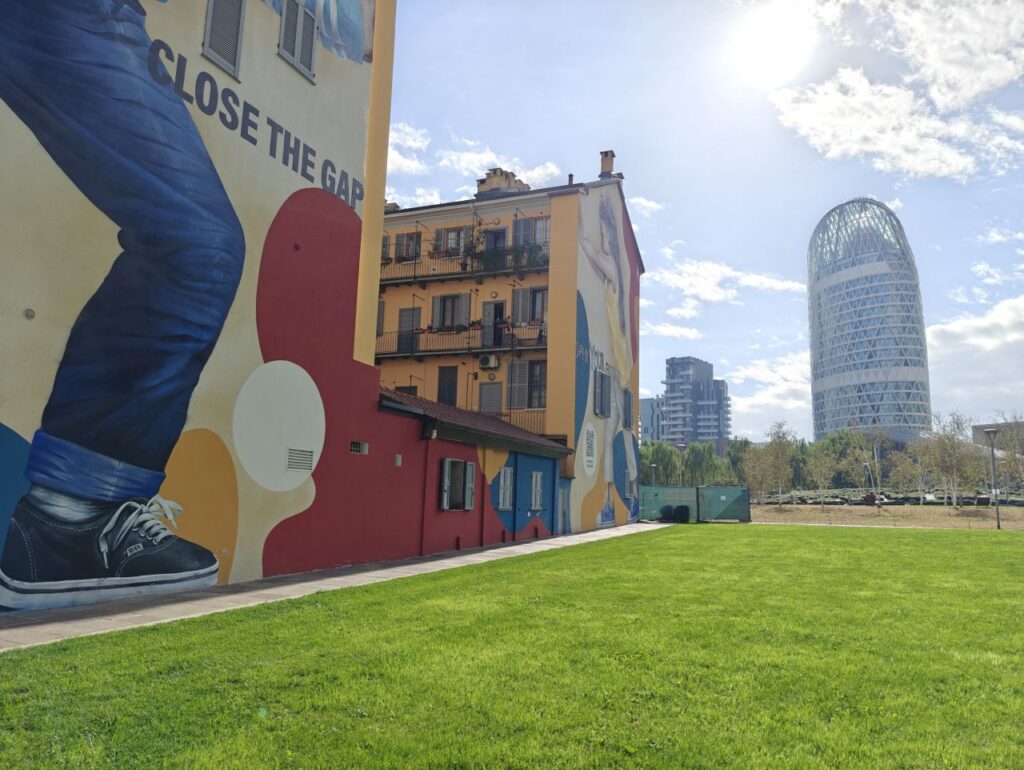
Performance is excellent and we expected nothing less: Qualcomm Snapdragon 8 Gen 2 processor, 16 GB of RAM and 512 GB of internal memory are there to satisfy every need, quickly and precisely.
Battery life isn’t bad either, with average use the 4805 mAh battery allows you to cover a day without difficulty. Then it is clear that it depends on how you use it and how many times you use the internal or external display.
Then we are there to help you fast charging, at 67 watts.
What is missing instead?
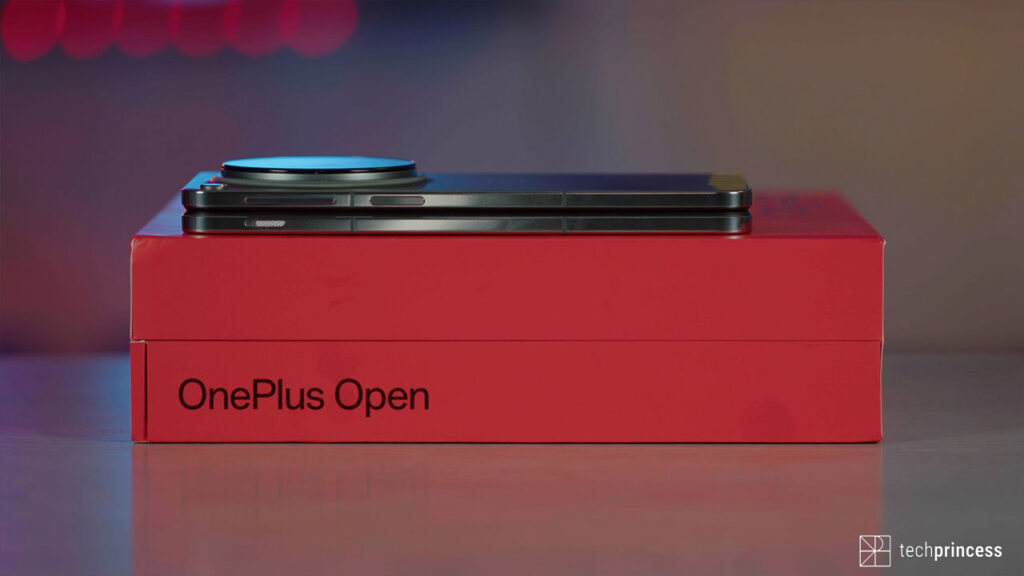
There is no wireless charging that, for example, the Galaxy Z Fold 5 offers us.
And, again comparing it to Samsung, there is no pen that benefits from the internal screen and there is no shortage of software features that make the Galaxy Z Fold very convenient for productivity.
Weight and dimensions do not differentiate it too much from its direct competitor. Indeed, there is the camera module which certainly makes it a little uncomfortable to keep in your pocket.
OnePlus Open review: conclusions
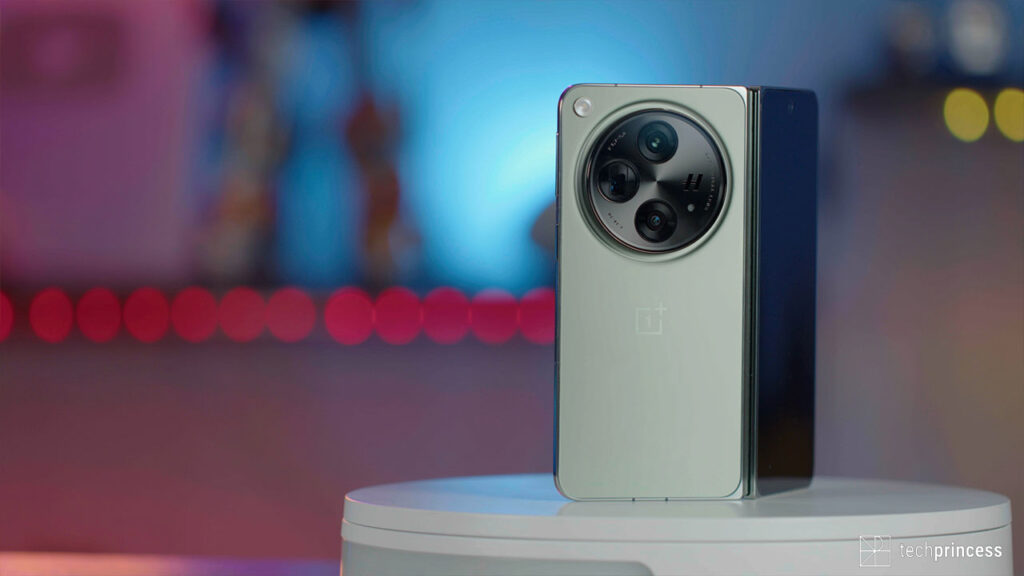
OnePlus Open is the debut leaflet. And overall, it’s a great debut but it lacks that something that could annoy the competition. Because it is true that it is strong from a photographic point of view but, let’s reiterate, there are not many people willing to spend 1,849 euros for a foldable that aims to be a cameraphone, even if only for the general size compared to other cameraphones.
In fact, however, it remains a great device that throws OnePlus into a market still to be explored like that of foldables.






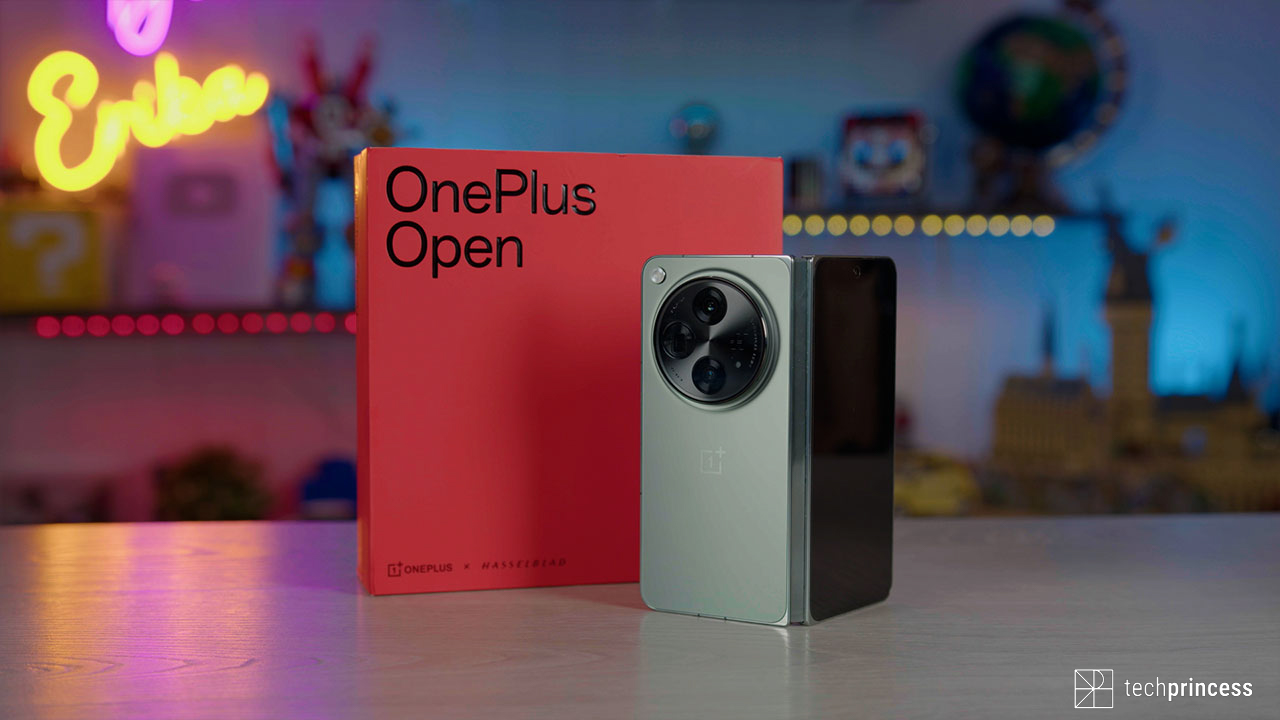








Leave a Reply
View Comments